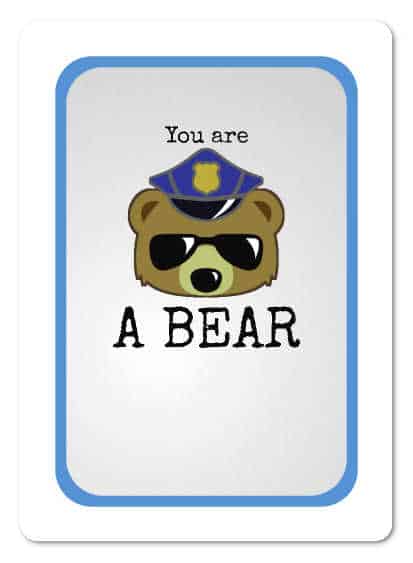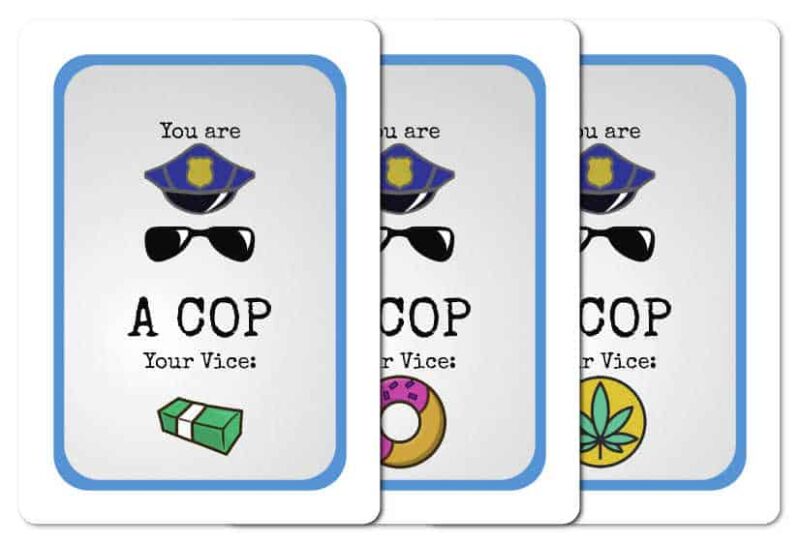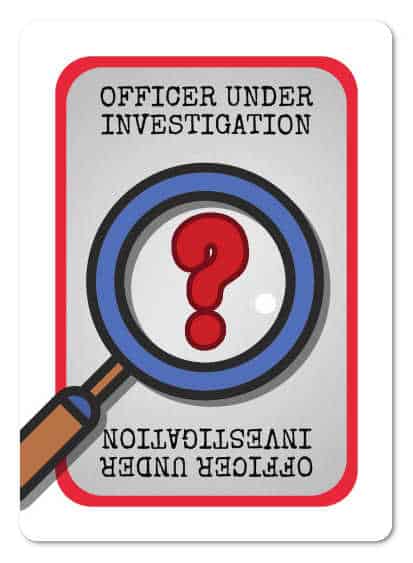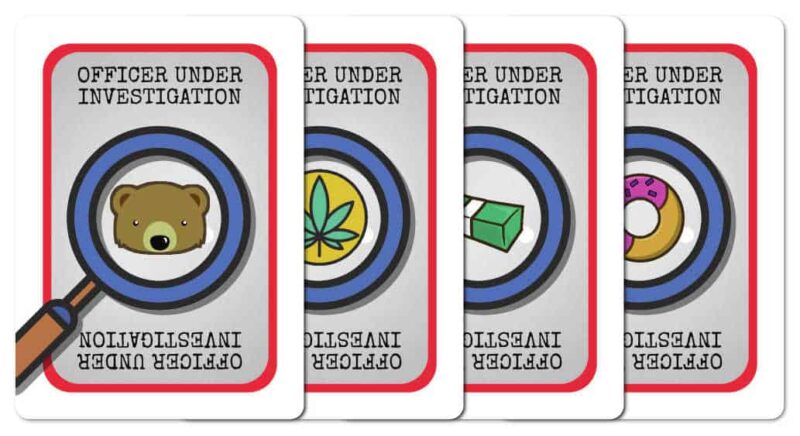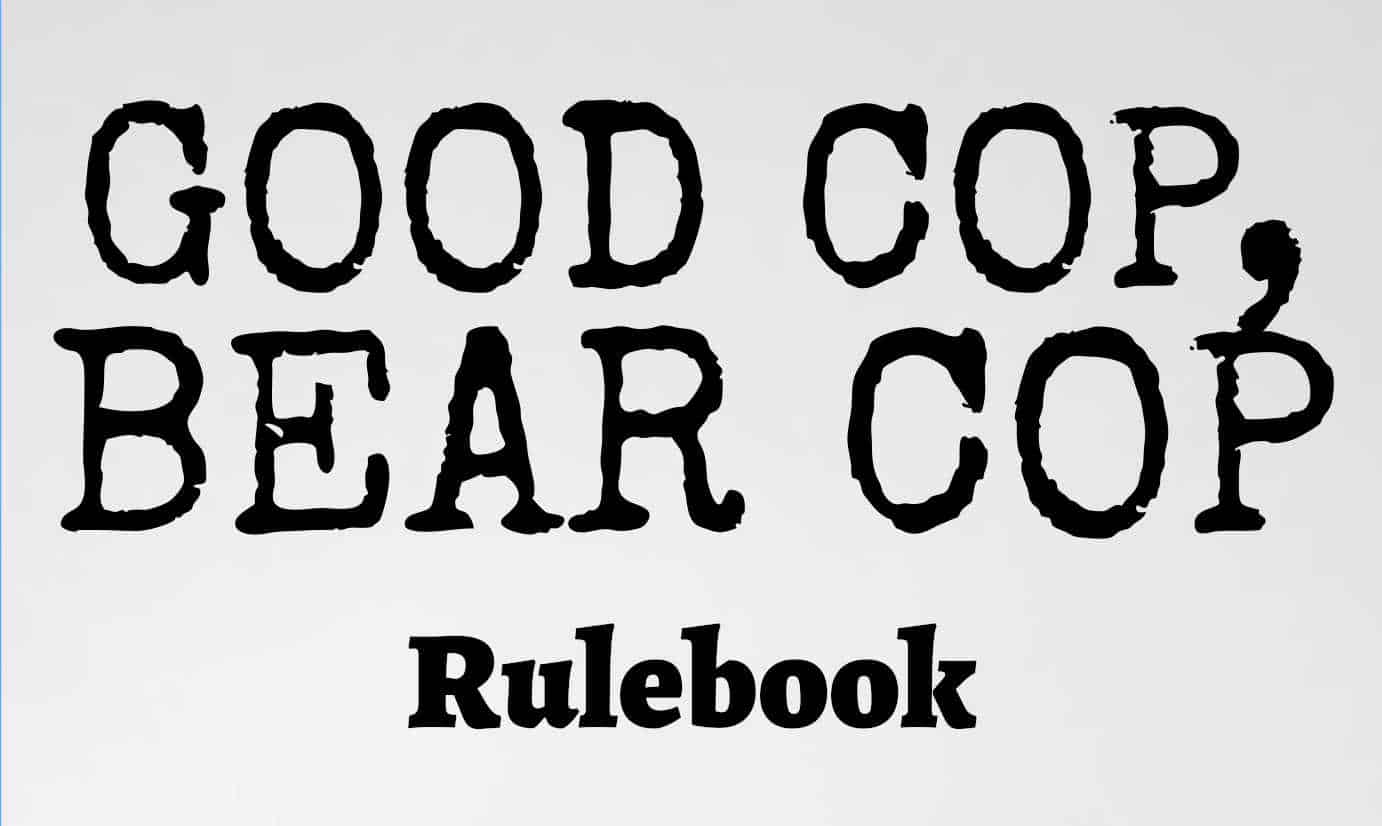
In this town, the cops have two problems. One, half the cops are corrupt, dangerous and regularly slack off, take bribes, or get high.
Two, some of the cops are bears.
Introduction
When you sit down to play Good Cop, Bear Cop, you and your friends are going to be taking on the roles of cops in this weird little precinct. Some of you are going to be trying to advance your personal vice, like laziness or bribery or gardening, and some of you will be playing noble, incorruptible bears who just want to solve problems.
Access
Good Cop, Bear Cop is a game where you will probably have to try and lie or deceive a friend about what your role is in the game. You can play the game without ever stating a lie, but the game does put you in a position to keep a secret. Some players aren’t comfortable with this, and make sure players are aware of this ahead of time.
You also need a place to put cards down where players can see them, and players need to be able to handle their Voting cards easily and be able to clearly put them down.
And always: Remember to respect the players and their needs.
Components
In your copy of Good Cop, Bear Cop, you should have the following cards:
- 10 Identity Cards, with 6 Cops and 4 Bears
- 10 Voting Cards with ‘YES’ on one side and ‘NO’ on the other
- 10 Internal Affairs Investigation Cards
- 18 Case cards
- 1 Duty Officer Card and 1 Lead Detective Card
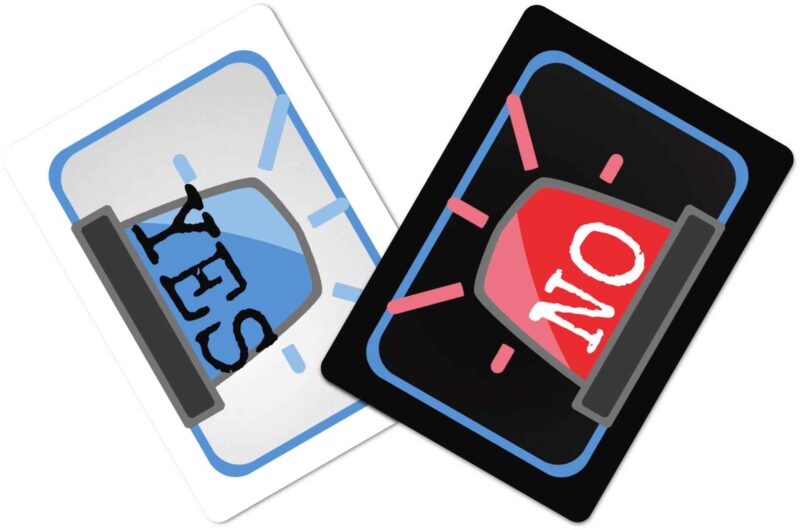
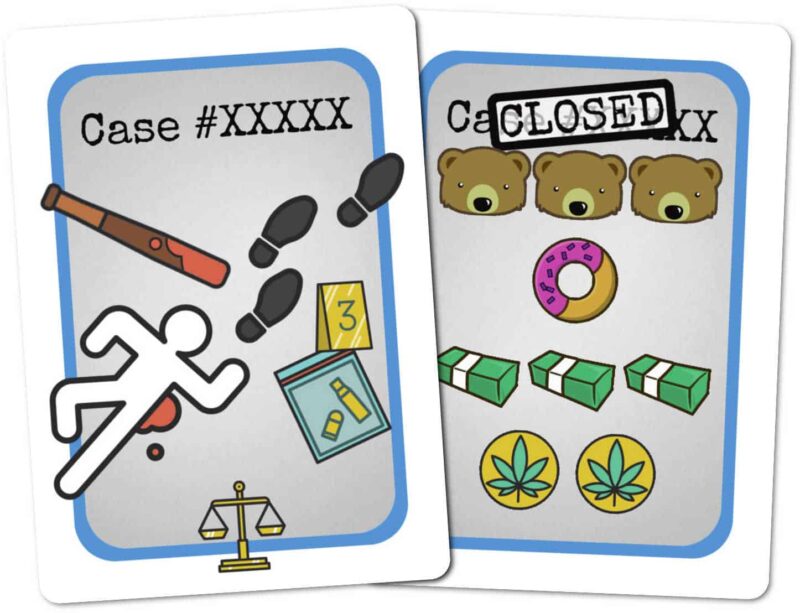
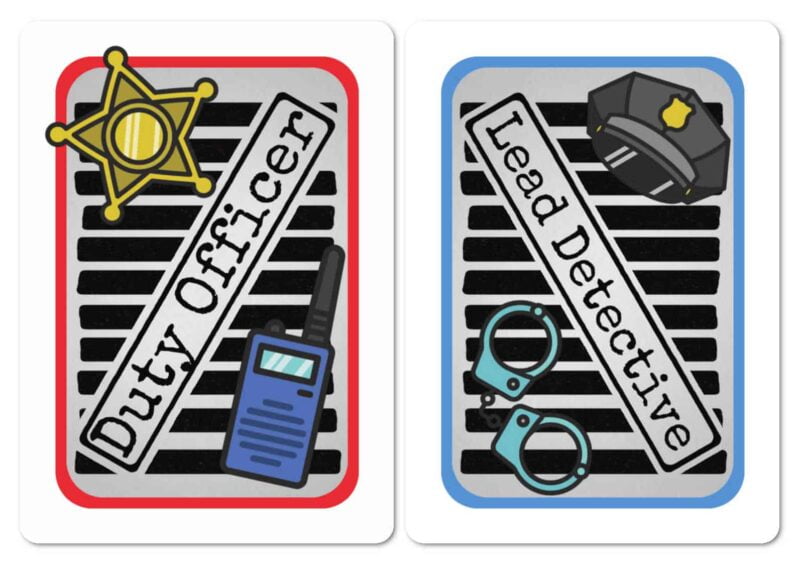
Your Goal
You want your vice, or bearness, to be the highest-scoring one in the Case Log at the end of the game. Bears are working together to get the highest Bear score they can, but the corrupt cops want their personal vice to win.
Setup
Give each player a voting card, and an ID card, showing their badge and gun on the back. At the start of the game based on the number of players you have, you select a number of ID cards with a certain number of Bear and Vice cops, as per the table below:
| Players | Vice Cops | Bear Cops |
|---|---|---|
| 5 | 3 | 2 |
| 6 | 3 | 3 |
| 7 | 4 | 3 |
| 8 | 4 | 4 |
| 9 | 5 | 4 |
| 10 | 6 | 4 |
Vice Cops are so named because they each have a Vice, which we’re pretty sure is why people do that in real life, too.
The three cop vices are SWEETIES, MONEYS, and GARDENING.
When you set up the game, you want to ensure there are as many different vices as possible in the options. At the start of the game, show the players the cards, so they know which vices have extras.
Play
Starting with the player who has most recently seen a bear1, a player is selected as the Duty Officer. They get the Lead Detective card. The Duty Officer selects another player to give the Lead Detective card for this turn. Before that player can begin their duties as a Lead Detective, though, there’s a chance for every other player to be okay with it, or complain to Internal Affairs about it; players discuss, then decide, by putting down their vote card either showing yes or no.
1 Or choose at random, whatever.
If the vote goes no, take the top card of the Case deck and put it face-down in the Case Log. This week, nobody really got to make a lot of work done. The Lead Detective card moves on to the next player.
If the vote goes yes, the Duty Officer draws the top three cards off the Case deck, and chooses one card to return to the bottom of the Case deck. Then they hand the remaining two cards to the Lead Detective. The Lead Detective then chooses one of those two cards to return to the bottom of the Case deck and puts the other card face-up in the Case Log.
Then, the Lead Detective and Duty Officer both have a chance to have a chat with Internal Affairs. Each draw the top three cards from the Investigation deck, and can choose to put one of those cards face-down next to a player who they suspect has the trait represented on the card. They put the remaining cards on the bottom of the Investigation deck.
After this, the Duty Officer card passes to a new player, who has to select a new Lead Detective and a new round begins.
Winning
The game ends when there’s a case in the Case Log for each player. That’s when it’s time to check the scores and see what players have won the game. Players turn over their Investigation cards, showing what they’re being investigated for.
Now, look at the Case Log: Count up how many Bears appear, how many of each vice appears. Each face-down card counts as a point for the Bears only.
The Bears win if they score more or equal than any vice.
Bears can’t score, if all the bears are under investigation for Being Bears.
If the Bears don’t win, the cop whose vice is the highest wins, but any cop who’s Under Investigation for their Vice can’t win. If two cops of the same vice have the highest score, they can’t win. There’s too much attention on them from Internal Affairs!
Variants
Here are some extra rules to play if you feel your Bear Cop tracking needs some more spice. These rules are here to make the gameplay harder: They essentially give players less information and more choices.
We made Good Cop, Bear Cop to be a social deduction game where you don’t have to make a lot of choices over time, to keep the game relatively quick. Bear that in mind when you use these variants, as they’ll make the game a bit slower and more difficult.
Snitching
In this version of the game, players don’t assign investigations at the end of their turn, but wait until the end of the game. At the end of each turn, the Lead Detective an Duty Officer look at the top three cards of the Investigation deck, pick one card, and keep it face-down in front of them.
Then, at the end of the game, the time comes to score, before people flip their ID cards to show who they are, players give their cards to other players, face up.
In this variant, players who correctly identify people by their vice or whether or not they’re bears get an extra point. In this variant, the end of the game is a big and noisy series of accusations, and it makes this more of a direct confrontation. It also gives players whose Vice is trailing a chance to pull ahead.
At the same time, this does give Bears a chance to take Bear Investigation cards out of the deck, and make it harder to accuse others.
The Lazy Officer
In some groups, you may only have 4 players, or you may want to introduce an extra element. In this case, you can introduce a lazy cop. Deal one extra face-down Identity card and give it a vote card, with one of three basic personalities:
- The Whatever Cop: This cop always votes yes.
- The Contrarian Cop: This cop always votes no.
- The Loose Cannon: This cop’s first vote is no. At the start of the each new turn, flip the vote over. That’s this cop’s vote for this round.
This cop can’t be assigned Lead Detective duty, and doesn’t get a turn as Duty Officer—they’re too lazy. Any time a player talks to Internal Affairs, they can assign
their card to this cop. If they do, they can look at the Lazy Cop’s face-down Identity card. This cop cannot win as a cop, and don’t count as sharing a vice with any other cop.
In the Snitching variant, any player who correctly accuses the Lazy Officer in the snitching phase of the game gets an extra three points to their vice of choice.
Credits
Game, Rulebook, Art: Talen Lee
Special Thanks:
To Hazel, for reacting to donuts
Archie, Fox, and David, for playtesting
Cass, for encouraging cuteness and discouraging powder
Officer Honeypaws, who knows what she did


